Male-female variation: select results from the survey
Note: This is a followup to my last post. Arabic and French translations of the survey are still being vetted and, once fully launched, we hope will allow a clearer picture of the views of local aid workers. Until those data are available, what we have is a snapshot of what mostly expat aid workers think and feel about their lives.
As a sociologist I have been trained to always think in terms of major demographic factors such as race/ethnicity, class/SES, age and, of course, sex/gender. We are all perceive ourselves and are perceived by others viv-a-vis relative to our location along these continuums.
Below I offer a deeper look into the male-famale variation throughout our survey. In sum, there are differences but none that I feel will be any huge surprise to anyone familiar with the field of humanitarian aid and, well, the fact that we live in a world where we are perceived and reacted to based on which gender people associate with us.
Relationships and family
Males are a bit overrepresented on the ‘been an aid worker for 10+ years’ (female = 18%, male = 31%, Q4) and this appears to be reflected in Q12 where the respondents were asked to self-report their relationship status, being forced into choosing one of three options, namely single and dating, single and not dating and in a relationship.
As you can see, females are far more likely to self-describe as ‘not dating’ than are males and male aid workers are far more likely to report themselves as being in a relationship. In Q13 we asked about marital status and the results were similar with nearly half of the males reporting being married (45%) and just over a fourth (26%) of the females indicating they were married.
If nothing else I think these data indicate that living the life of an aid worker is different based on whether you have ovaries or a penis, certainly to the extent that having an intimate other to share deep thoughts, emotions and, well, intimacy with is an important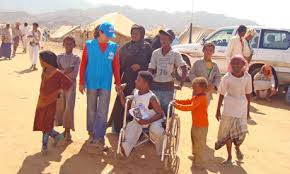 (critical?) part a healthy, whole human experience. This snapshot of data begs further probing, methinks, and who knows what the same person would have responded if they took the survey a month earlier or later. Lives change fast sometimes, and snapshots are not very helpful fleshing out the more complex and nuanced details of lives.
(critical?) part a healthy, whole human experience. This snapshot of data begs further probing, methinks, and who knows what the same person would have responded if they took the survey a month earlier or later. Lives change fast sometimes, and snapshots are not very helpful fleshing out the more complex and nuanced details of lives.
That said, snapshots can be telling.
A very important and related question was the one asking whether or not the respondent had children. Although 9% of both males and females reported having one child, more than three times as many males than females reported having more the one child (23% and 7%, respectively). Do children make life more complete? As a parent myself and based on my experience, I’ll hazard a ‘yes’ to that rhetorical question. Does having a spouse and children make doing aid work more complicated? Big ‘yup’ on that one, to be sure.
As a quick note, educational background of females and males seems uncannily similar.
Becoming and remaining an aid worker
In response to the Q22, “Which statement below *best* describes your primary reason for becoming an aid worker?” male and female answers were similar, but a slightly higher percentage of males (17% v. 9%) checked the box that stated, “I needed an adventure in my life and being an aid worker sounded like a good idea.” Females were slightly more likely (36% v. 29%) to check the box that stated, “None of the above even comes close to articulating my reason for becoming an aid worker.”
Yes, its complicated.
Q23 invites, “Please elaborate on the response you gave to the question above on why you became an aid worker.” In another post I will comment on the male-female differences in these comments but for now I’ll point out that 596 people that took the time to go deeper. Similarly, in response to “What are your primary reasons for remaining an aid worker? Are your reasons for staying in this field different from the ones that brought you to it in the first place?” of the 614 respondents made time for a narrative response.
On burnout
Do males and females experience burnout in slightly different ways? One might guess as much. Below you can see that the  numbers are minimally different in response to our question asking about burnout of aid workers as compared to other professions. It is note worthy that a significant majority of all aid workers perceived the work that they do as carrying a higher risk of burnout than other professions. Do tell.
numbers are minimally different in response to our question asking about burnout of aid workers as compared to other professions. It is note worthy that a significant majority of all aid workers perceived the work that they do as carrying a higher risk of burnout than other professions. Do tell.
As to how aid workers report dealing with the burnout that comes with their job, the male-female responses were very close, but we found more than a 3 to 1 difference in those taking the time to offer “other” comment, females being much more likely.
A look at the data below indicates the vast majority (though slightly higher for females) report more than minimal burnout. A look at the “self medication” response indicates that more than 23% of aid workers use this coping mechanism with a slightly higher percentage of females represented.
Idealism
As to how being an aid worker has effected their level of idealism, the results are very close when comparing males and females, though it is interesting that nearly double the number of males reported their idealism actually increasing now that they have become an aid worker. Overall I think that a fair interpretation of the data below is that females seem to report a more negative impact on their level of idealism, though, in response to the prompt “In general, how much do you like what you do as a humanitarian aid worker?” the male-female responses were identical at just over 56% in indicating that “I like what I do as a humanitarian air worker to a great extent.”
The notion that females are slightly less idealistic than males is supported by the responses to Q32, “Which statement below best describes how satisfied you are that what you do makes a difference for good?”
Conclusions?
The results and comment above touch on only select questions from the survey (more to come soon!), but they do speak to somewhat different experiences and perceptions for male and female aid workers. As I read through a wide array of blogs, books and tweets from various aid workers I find very consistent support for what we have found in our data thus far.
No surprise there; we live in a world that treats males and females differently.
As always, if you have comments, questions or feedback send me an email. More to come soon.




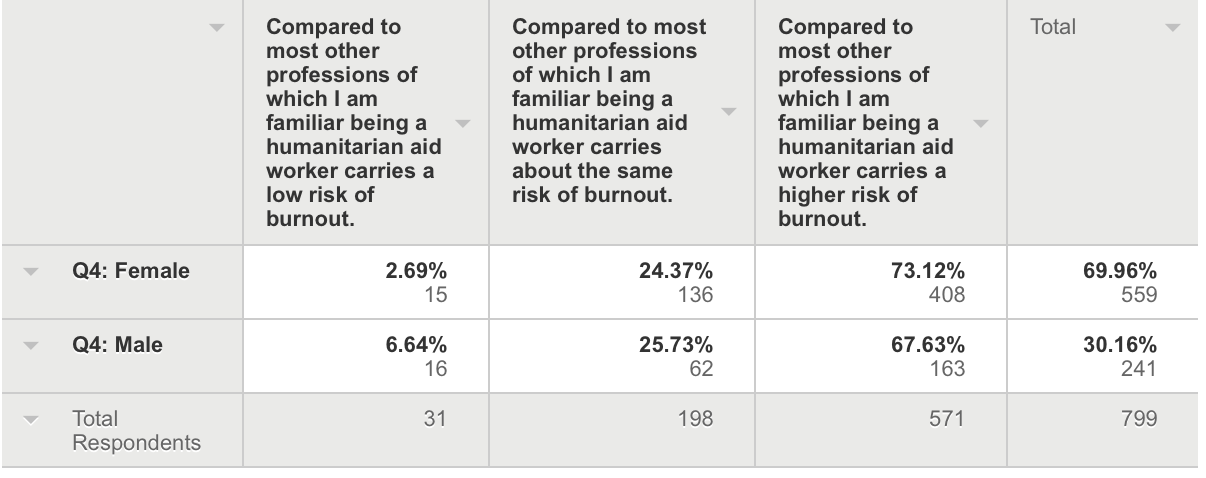
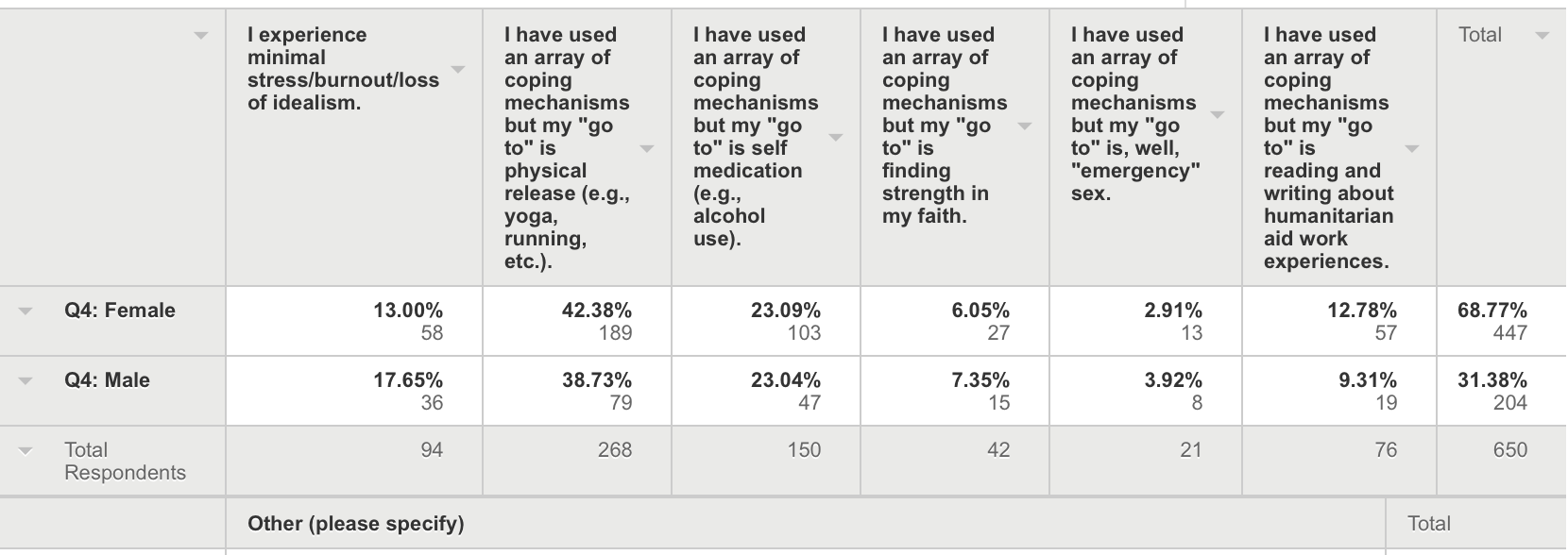
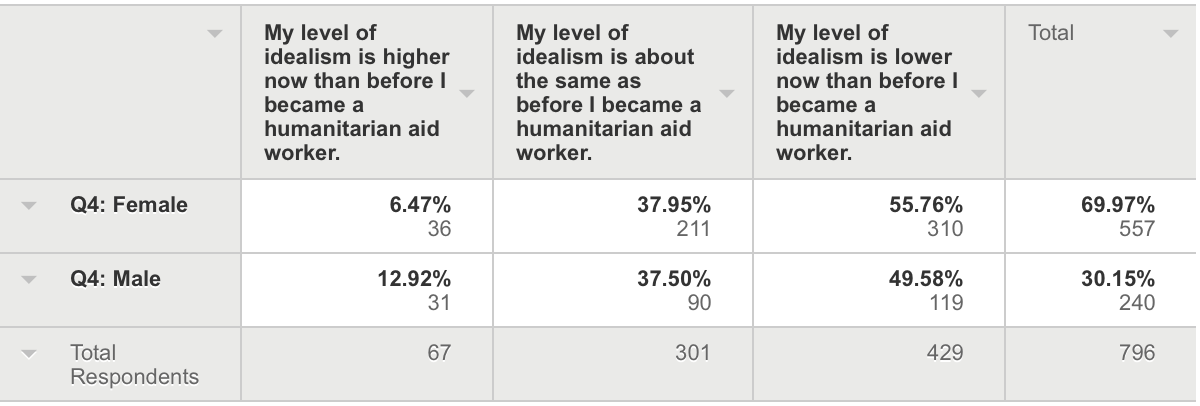
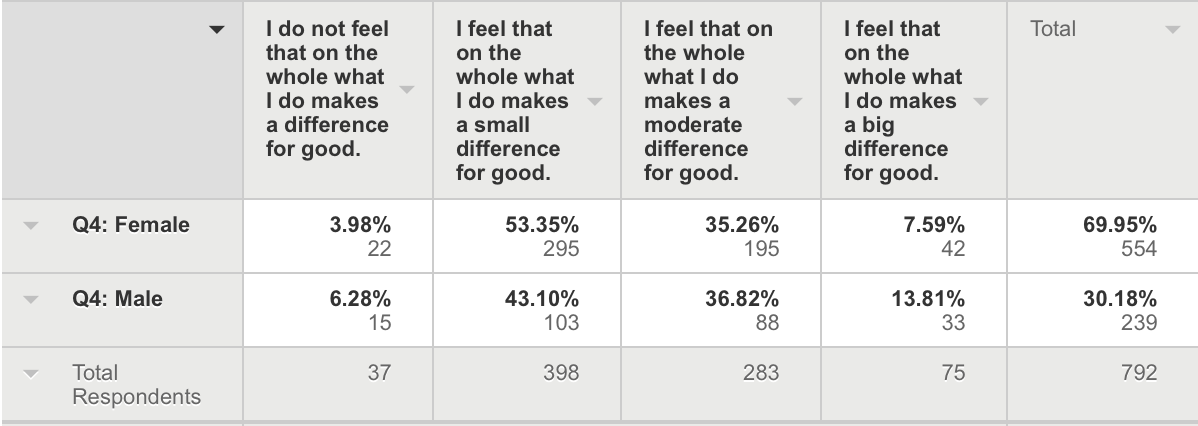
 Follow
Follow